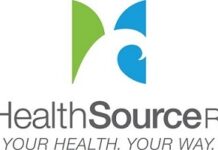PROVIDENCE – A study conducted by Clinica Esperanza/Hope Clinic suggests that its nurse-run, walk-in CHEER Clinic will save an estimated $1.28 million in future health care costs.
The study, which was recently published in the Journal of Community Health peer-review publication, examined how a clinic with non-physician providers such as nurses and student volunteers can improve access to care for the uninsured with non-urgent health problems and avoid unnecessary, costly visits to the emergency room.
“We wanted to quantify the work we do to see how well expanding our service in the form of a nurse-run, walk-in clinic would work at avoiding unnecessary visits to the ER while improving access to care,” said Dr. Anne S. De Groot, Clinica Esperanza/Hope Clinic volunteer medical director. “Our findings show that CHEER was extremely cost effective, preventing 71 visits to the ER during those five months.”
Clinica Esperanza/Hope Clinic established the CHEER Clinic in August 2012 as a pilot intervention to provide local, uninsured Rhode Islanders an alternative to the ER. The clinic treats non-urgent health problems such as cold and flu symptoms, upset stomach and skin problems, as well as providing flu shots and other vaccinations.
The study evaluated data gathered through voluntary, anonymous surveys by patients during CHEER’s first five months of operation. Each service provided was assigned a score representing an estimated range of quality-adjusted life years saved based on each preventive service’s effectiveness at avoiding future health problems.
“When we incorporated the value of preventive services rendered, we found an estimated $1.28 million in savings of future health care costs,” said De Groot. “From there we calculated a return on investment of $34 per $1 invested.”
The CHEER Clinic serviced 256 patients during the pilot-study period.
According to Clinica Esperanza/Hope Clinic, roughly 7 percent of the more than 129 million visits to U.S. ERs in 2010 were non-urgent, and uninsured patients are more likely than those with insurance to visit the ER for non-urgent care due to lack of access to primary care.
“With this alarming increase in ER usage and rising costs of health care in general, we feel strongly that communities would benefit greatly by providing increased access to non-urgent health services for the uninsured,” said De Groot. “Ultimately, following the CHEER Clinic model could result in improved health outcomes for those most deeply affected by disparities in the health care system – and reduce health care spending.”
In September, Clinica Esperanza/Hope Clinic received $50,000 from Blue Cross & Blue Shield of Rhode Island to support the CHEER walk-in clinic, after receiving $40,000 from Blue Cross the previous year.












